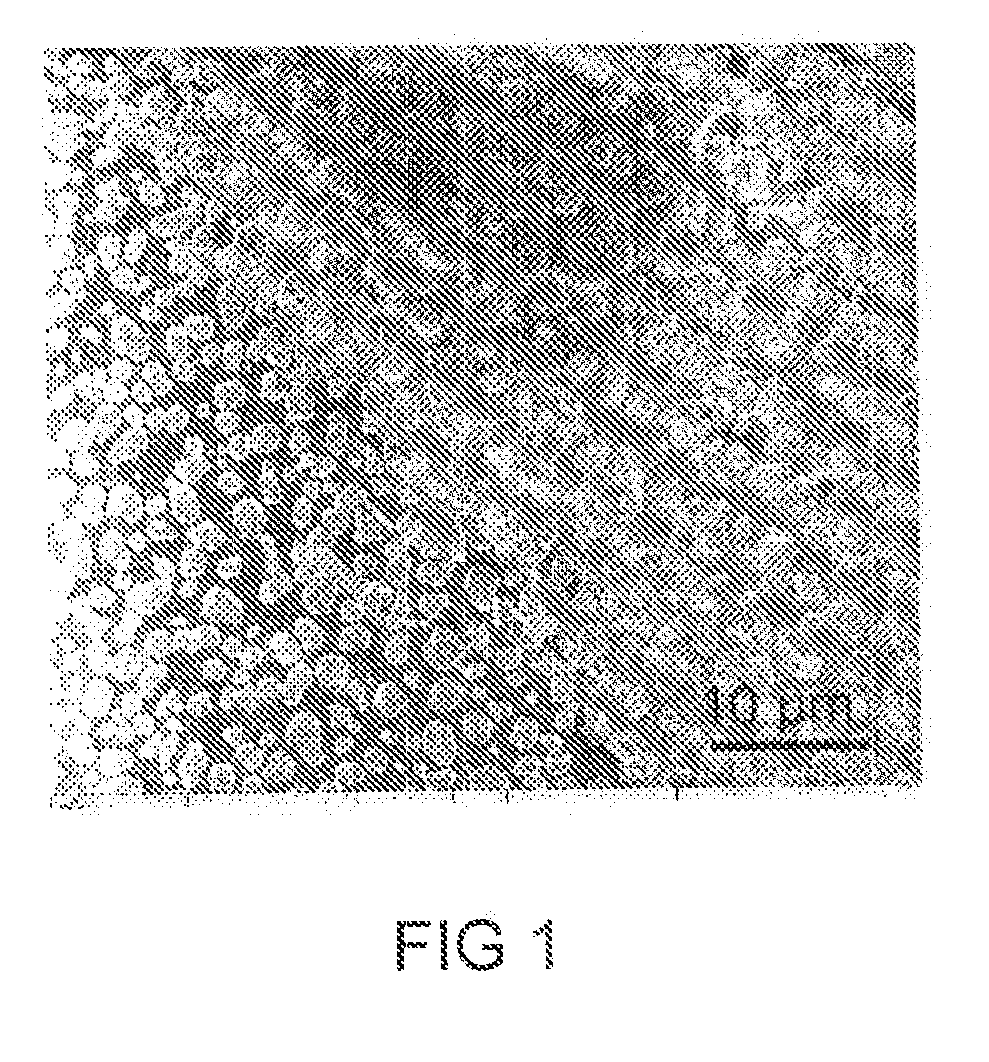Soda-lime-silica glass-ceramic material
a technology of soda-lime-silica glass and glass-ceramic material, which is applied in the field of soda-lime-silica glass-ceramic material, can solve the problems of uncontrolled heterogeneous crystallization and the inability to produce homogeneous crystallization, and achieves good resistance to scratch propagation, improved tempering, and increased mechanical strength
- Summary
- Abstract
- Description
- Claims
- Application Information
AI Technical Summary
Benefits of technology
Problems solved by technology
Method used
Image
Examples
examples
[0061]A composition C1 comprises, as percentage by total weight, 80.3% of SiO2, 10.3% of Na2O and 9.4% of CaO.
[0062]This composition was melted at a temperature of 1550° C. then poured into a 4 cm×4 cm mould having a height of one centimeter. The amorphous glass obtained by gradual cooling of the composition C1 was then treated thermally by heating (annealing) at a temperature of 1000° C. for 1 h, followed again by a gradual cooling to ambient temperature. The material M1 was obtained for the composition C1.
[0063]The coefficient of linear thermal expansion (CTE), the hardness and the brittleness were evaluated for the material Mi. The hardness (H) and the brittleness (B) were determined by Vickers indentation (load: 0.5 kg, application time: 25 sec.) whilst the CTE was obtained using a dilatometer for a range of temperatures from 25 to 300° C. (ISO 7991:1987 standard). These techniques will not be explained further as they are well known to persons skilled in the art in the field of...
PUM
| Property | Measurement | Unit |
|---|---|---|
| Temperature | aaaaa | aaaaa |
| Fraction | aaaaa | aaaaa |
| Percent by mass | aaaaa | aaaaa |
Abstract
Description
Claims
Application Information
 Login to View More
Login to View More - R&D
- Intellectual Property
- Life Sciences
- Materials
- Tech Scout
- Unparalleled Data Quality
- Higher Quality Content
- 60% Fewer Hallucinations
Browse by: Latest US Patents, China's latest patents, Technical Efficacy Thesaurus, Application Domain, Technology Topic, Popular Technical Reports.
© 2025 PatSnap. All rights reserved.Legal|Privacy policy|Modern Slavery Act Transparency Statement|Sitemap|About US| Contact US: help@patsnap.com

